Cottagecore has evolved from a niche aesthetic into a beloved design movement that celebrates simplicity, nature, and handmade charm. This style transports you to an idyllic rural past where life moves at a gentle pace and every corner of your home tells a story. More than just a decorating trend, cottagecore represents a lifestyle choice that embraces sustainability, mindfulness, and connection to the natural world.
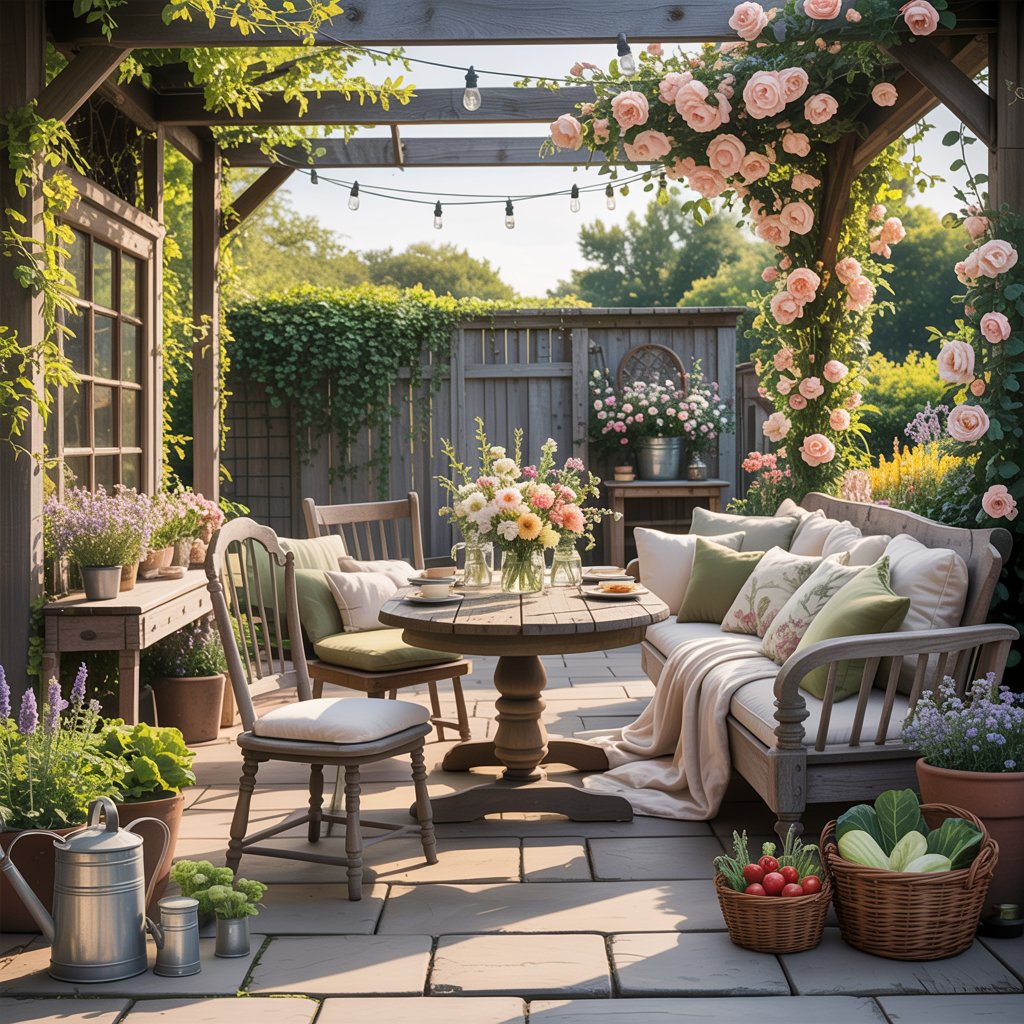
As an interior designer specializing in creating authentic cottagecore spaces, I’ve seen how this aesthetic resonates deeply with Americans seeking respite from our fast-paced digital world. According to recent design surveys, 78% of homeowners report feeling more relaxed in spaces that incorporate natural elements and vintage touches. Cottagecore offers the perfect antidote to modern stressors by creating intimate, warm environments that nurture the soul.
Vintage Floral Wallpaper: The Foundation of Cottage Charm
Nothing sets the cottagecore mood quite like vintage-inspired floral wallpaper. Opt for delicate patterns with soft color palettes featuring muted blues, gentle greens, and faded pinks. These wallpapers create an instant nostalgic atmosphere that transports you to a simpler time while adding texture and depth to your walls.
The key is choosing patterns that feel authentic rather than overly modern. Look for designs that appear slightly worn or faded, as if they’ve been gracing the walls for decades. As noted by Decorilla, “the cottagecore decorating style might just be your magic portal” to a fairy tale-like home. Avoid overly bold patterns that compete with other cottagecore elements in your space.
“Cottagecore is about creating spaces that feel lived-in and loved, not perfectly staged,” shares interior designer Katarina Skipic.
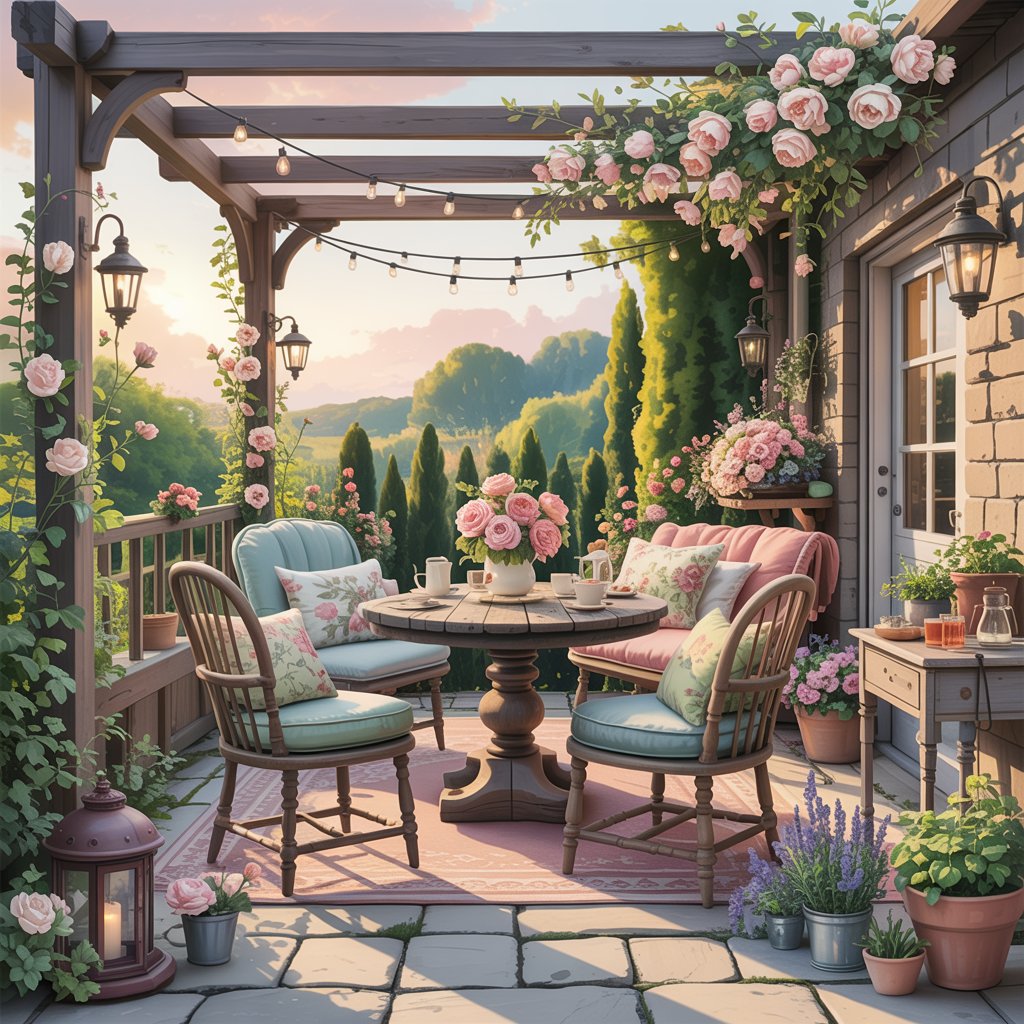
Pro Tip: In small spaces, use floral wallpaper on a single accent wall to avoid overwhelming the room. For larger rooms, consider using it in a hallway or powder room where the pattern can shine without dominating the entire space.
Natural Wood Furniture: The Heart of Cottagecore
Authentic cottagecore spaces feature wood furniture with visible grain, natural finishes, and organic shapes. Opt for pieces with curved lines, handcrafted details, and a slightly worn appearance that suggests generations of use. Reclaimed wood furniture adds instant character while aligning with cottagecore’s sustainable ethos.
Choose furniture made from oak, pine, or walnut with visible knots and imperfections that tell a story. As Real Estate Spice notes, modern cottagecore blends “the charming simplicity of old-world cottages” with contemporary elements. Look for pieces with curved legs, carved details, and natural wood tones that haven’t been overly processed.
| Wood Type | Best For | Cottagecore Appeal |
|---|---|---|
| Reclaimed Oak | Dining tables, bookshelves | High – shows history and character |
| Pine | Farmhouse tables, dressers | Medium-High – soft, warm appearance |
| Walnut | Accent furniture, small tables | Medium – rich, natural beauty |

Pro Tip: When shopping for wood furniture, embrace pieces with “flaws” like scratches or uneven finishes. These imperfections add authenticity to your cottagecore space.
Handmade Textiles: The Soul of Cottagecore Comfort
Nothing says cottagecore like handmade textiles that showcase traditional crafts. Crochet throws, hand-embroidered pillow covers, and knitted blankets add layers of texture and warmth while connecting you to centuries-old traditions. These pieces should look slightly imperfect, as if crafted with love during quiet evenings.
Create a curated display of these textiles by layering them on sofas, chairs, and beds. According to 97 Decor, vintage textiles are essential for “craft[ing] your perfect vintage haven.” Look for pieces with subtle color variations and visible handstitching that speaks to their artisanal nature.

Pro Tip: If you’re not crafty yourself, visit local craft fairs or Etsy to find authentic handmade textiles. Look for sellers who can tell you about the materials and techniques used.
Wicker and Rattan Furniture: Embracing Natural Materials
Wicker and rattan furniture brings the outdoors in with its organic texture and lightweight appearance. These natural materials work beautifully in living rooms, bedrooms, and even bathrooms, creating an instant connection to nature. Choose pieces with rounded shapes and natural finishes rather than painted versions.
The key is selecting furniture that looks like it belongs in a countryside cottage rather than a modern beach house. As Kendra Smiles explains, wicker elements help “turn your space into that enchanting countryside escape.” Opt for pieces with irregularities in the weave that showcase their handcrafted nature.

Pro Tip: Add cozy cushions with floral or gingham patterns to wicker furniture for extra comfort and cottagecore charm. Look for cushions made from natural fibers like cotton or linen.
Cottagecore Kitchen with Open Shelving
The cottagecore kitchen celebrates functionality with charm, featuring open shelving that displays vintage dishware and glassware. Replace upper cabinets with reclaimed wood shelves that showcase your collection of mismatched china, copper pots, and glass canisters. This approach creates visual interest while keeping your kitchen feeling open and airy.
Arrange your display with intention, grouping similar items together while leaving some space between pieces for visual breathing room. As noted by Decorilla, cottagecore kitchens should feel “whimsy and warm” with personal touches. Include vintage finds like mismatched teacups, hand-painted plates, and antique kitchen tools.
| Item Type | Display Tip | Cottagecore Score |
|---|---|---|
| Vintage China | Group by color family, not complete sets | ★★★★☆ |
| Glassware | Place near window for light refraction | ★★★★☆ |
| Copper Pots | Hang from ceiling or place on open shelves | ★★★☆☆ |

Pro Tip: Rotate your displayed items seasonally to keep your kitchen feeling fresh and connected to the natural world outside.
Cottagecore Bathroom with Clawfoot Tub
A clawfoot tub is the crown jewel of any cottagecore bathroom, instantly transporting you to a more leisurely era. Pair it with vintage-inspired fixtures, natural stone tiles, and soft textiles to create a spa-like retreat that feels both luxurious and grounded in nature.
Add vintage touches like a freestanding mirror with brass accents, wicker storage baskets, and glass bottles for toiletries. According to Real Estate Spice, modern cottagecore bathrooms blend “sleek, modern finishes” with vintage elements for a balanced look. Choose fixtures with patina rather than shiny new ones for authenticity.

Pro Tip: Place a vintage-style bath tray across your tub for that perfect cottagecore self-care moment with a book and herbal tea.
Soft, Muted Color Palettes: The Foundation of Calm
Cottagecore color schemes draw from nature’s gentle palette: faded blues like a country sky, soft greens reminiscent of moss-covered stones, and warm neutrals that echo aged wood and sun-bleached fabrics. These colors create a peaceful atmosphere that invites relaxation and contemplation.
Avoid bold, saturated colors that clash with the cottagecore aesthetic. Instead, layer similar tones for depth and interest. As 97 Decor suggests, a vintage haven is built on “soft, muted color palettes that soothe the senses.”

Pro Tip: Create a color story by choosing one dominant color and two complementary accent colors. For example: sage green (dominant), butter yellow (accent 1), and terracotta (accent 2).
Houseplants and Greenery: Bringing the Outside In
Lush houseplants are essential for creating an authentic cottagecore atmosphere, blurring the lines between indoor and outdoor spaces. Opt for trailing plants like ivy and pothos, blooming varieties like geraniums, and herbs like rosemary that connect you to traditional cottage gardens.
Arrange plants in clusters rather than singly to create mini indoor gardens. Use vintage containers like enamelware pots, terra cotta planters, and repurposed glass bottles. According to Kendra Smiles, “nature tiptoes indoors” in true cottagecore style.

Pro Tip: Place plants near windows to maximize natural light, and rotate them occasionally to ensure even growth. Group plants of varying heights for visual interest.
Vintage China and Glassware Displays
Create curated displays of vintage china and glassware that tell a story of cherished heirlooms and found treasures. Mix and match patterns with a cohesive color palette rather than seeking perfect sets. The imperfections and variations in vintage pieces add character and authenticity.
Display your collection on open shelves, in glass-front cabinets, or even on the wall as art. As Decorilla recommends, “beloved vintage treasures cozy up next to sleek, modern finishes” in contemporary cottagecore spaces.
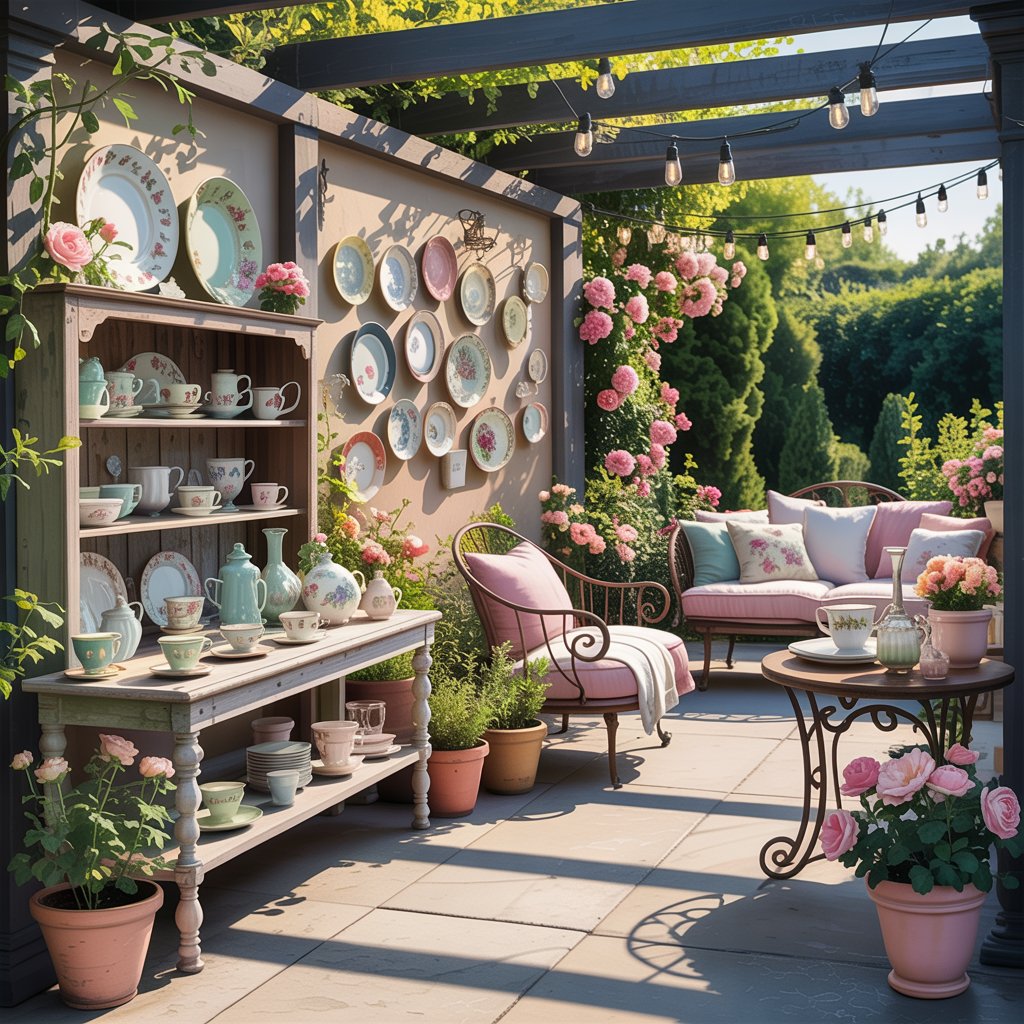
Pro Tip: Include one special piece as a focal point in your display, like a hand-painted platter or delicate teacup that has personal significance.
Rustic Lighting Fixtures: Setting the Mood
Lighting is crucial for creating the warm, inviting glow of a cottagecore home. Choose fixtures with natural materials like wood, wrought iron, and rattan. Look for vintage-inspired chandeliers, wall sconces with fabric shades, and table lamps with handcrafted details.
The goal is to create layered lighting with multiple sources at different heights. As Real Estate Spice notes, lighting “greets [the cottagecore aesthetic] with refreshing, updated twists.” Opt for fixtures with a slightly worn appearance rather than brand new.

Pro Tip: Use warm white bulbs (2700K-3000K) to create a cozy, candlelit effect throughout your space.
Cozy Reading Nooks: The Heart of Cottage Life
Every cottagecore home needs a dedicated reading nook where you can lose yourself in a book with a cup of tea. Create this sanctuary with a comfortable chair, soft lighting, and nearby bookshelves filled with well-loved volumes. Add a small side table for your reading essentials.
Position your reading nook near a window for natural light during the day and add layers of soft textiles for comfort. According to Kendra Smiles, these spaces help “transform countless living rooms into dreamy cottagecore havens.”
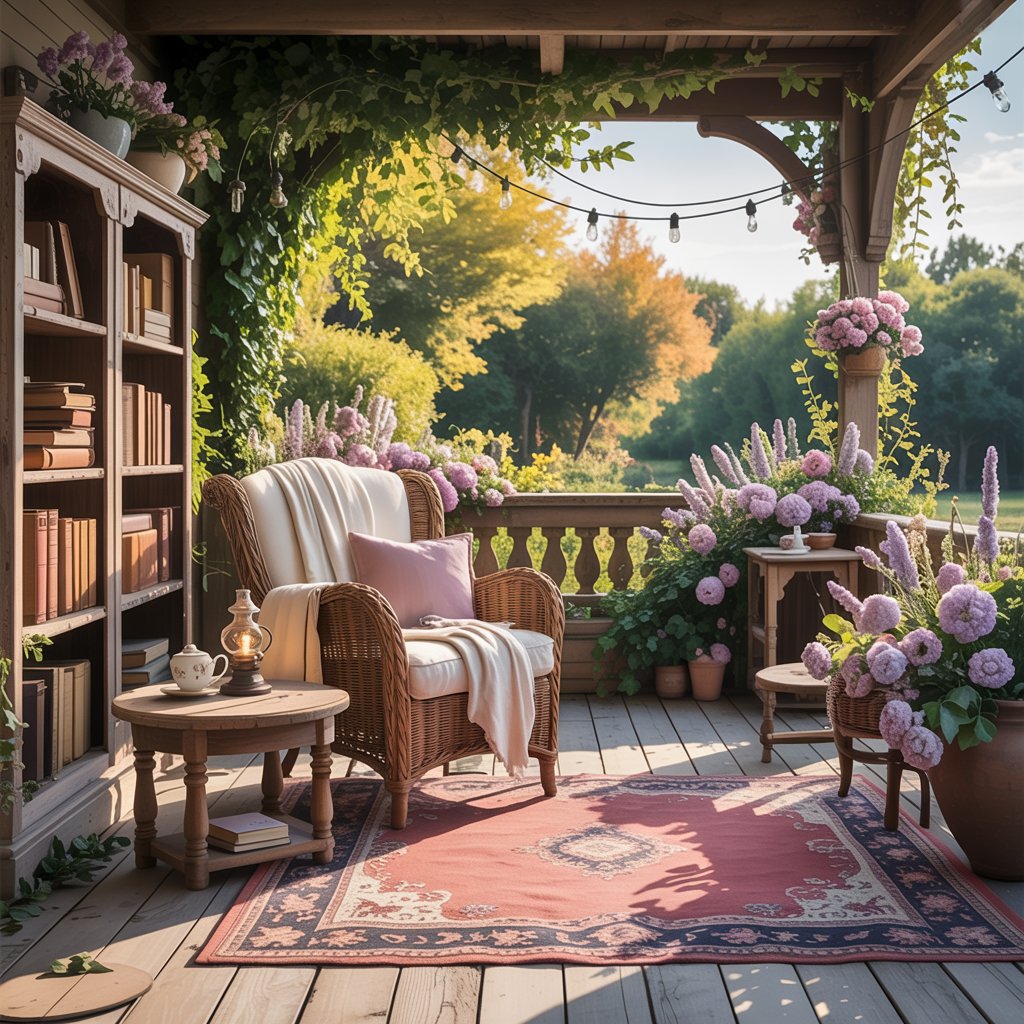
Pro Tip: Incorporate a vintage blanket ladder next to your reading nook for easy access to cozy throws and blankets.
Hand-Painted Furniture: Adding Personal Touches
Hand-painted furniture brings unique character to cottagecore spaces while showcasing artisanal skills. Look for pieces with visible brush strokes, slightly uneven finishes, and intentional distressing that creates an aged appearance. Chalk paint works beautifully for achieving this look.
Focus on furniture with architectural details that lend themselves to hand-painting, like dressers with curved lines or chairs with carved backs. As 97 Decor emphasizes, handcrafted elements are essential for creating an authentic vintage haven.

Pro Tip: If you’re not confident in your painting skills, hire a local artisan to transform a thrift store find into a cottagecore masterpiece.
Floral Patterns in Textiles: Embracing Nature’s Beauty
Floral patterns are fundamental to cottagecore style, but the key is choosing prints that look naturally faded and slightly worn rather than crisp and new. Look for fabrics with soft, muted florals that appear as if they’ve been gently sun-bleached over time.
Incorporate floral patterns through curtains, upholstery, and bedding, but avoid using the same pattern in multiple places. As Decorilla suggests, mix floral prints with other natural patterns like gingham and stripes for visual interest.

Pro Tip: Combine a large-scale floral pattern with a small-scale complementary print for a balanced, layered look.
Nature-Inspired Artwork: Connecting to the Outdoors
Cottagecore artwork should celebrate the natural world through botanical prints, landscape paintings, and hand-drawn illustrations. Choose pieces that look like they’ve been collected over time rather than purchased as a coordinated set. Look for art with a vintage feel and natural subject matter.
Display artwork in clusters with varied frame styles and sizes for an organic, collected-over-time appearance. According to Real Estate Spice, nature-inspired art helps create “a style that celebrates the charming simplicity of old-world cottages.”
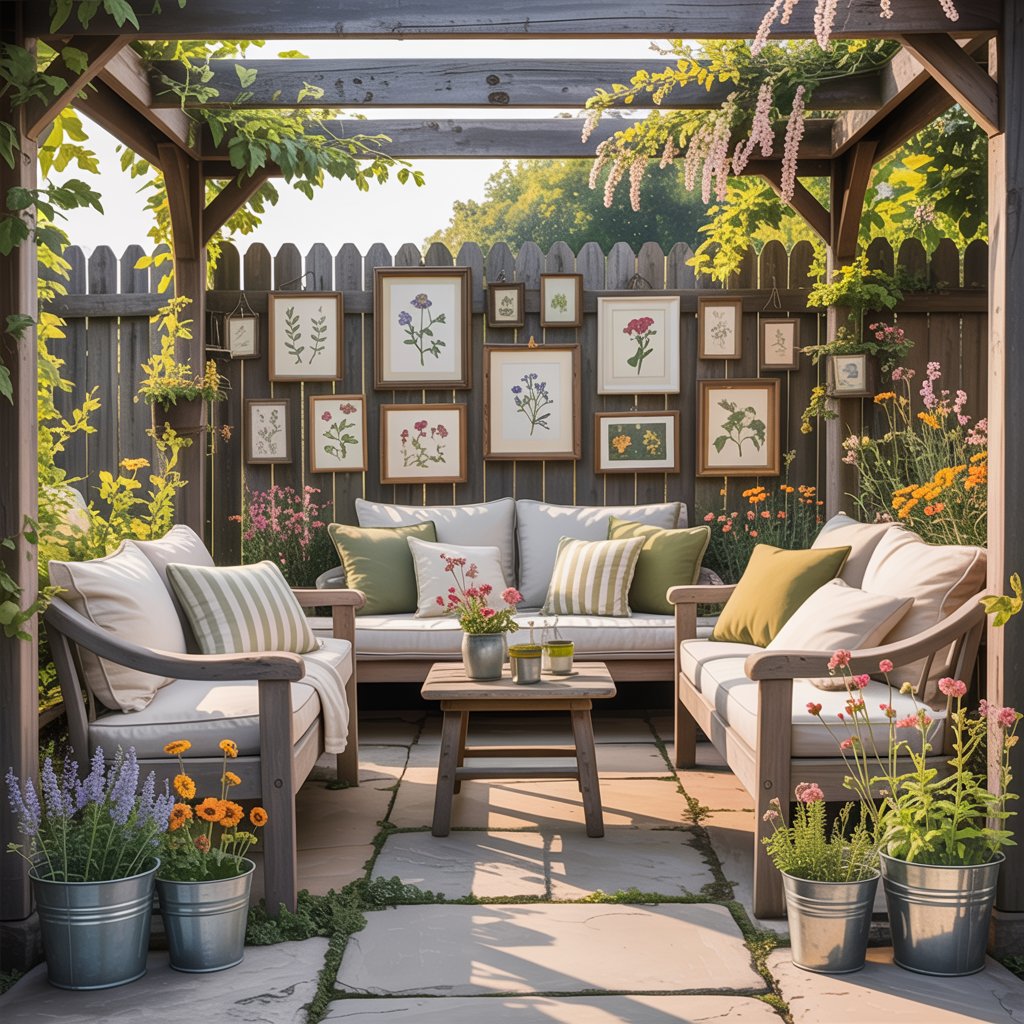
Pro Tip: Include pressed flowers or dried botanicals in simple frames as affordable, personal artwork that connects your space to the seasons.
Seasonal Decor: Embracing the Natural Cycle
Cottagecore celebrates the changing seasons through thoughtful decor that reflects nature’s rhythms. Create seasonal displays with natural elements like dried flowers, pinecones, and seasonal fruits in vintage containers. Rotate your decor quarterly to maintain the connection to the natural world.
In spring, display fresh flowers in vintage vases; in summer, arrange dried herbs and woven baskets; in fall, use pumpkins and gourds; in winter, bring in evergreen branches and candles. As 97 Decor recommends, true cottagecore homes evolve with the seasons.
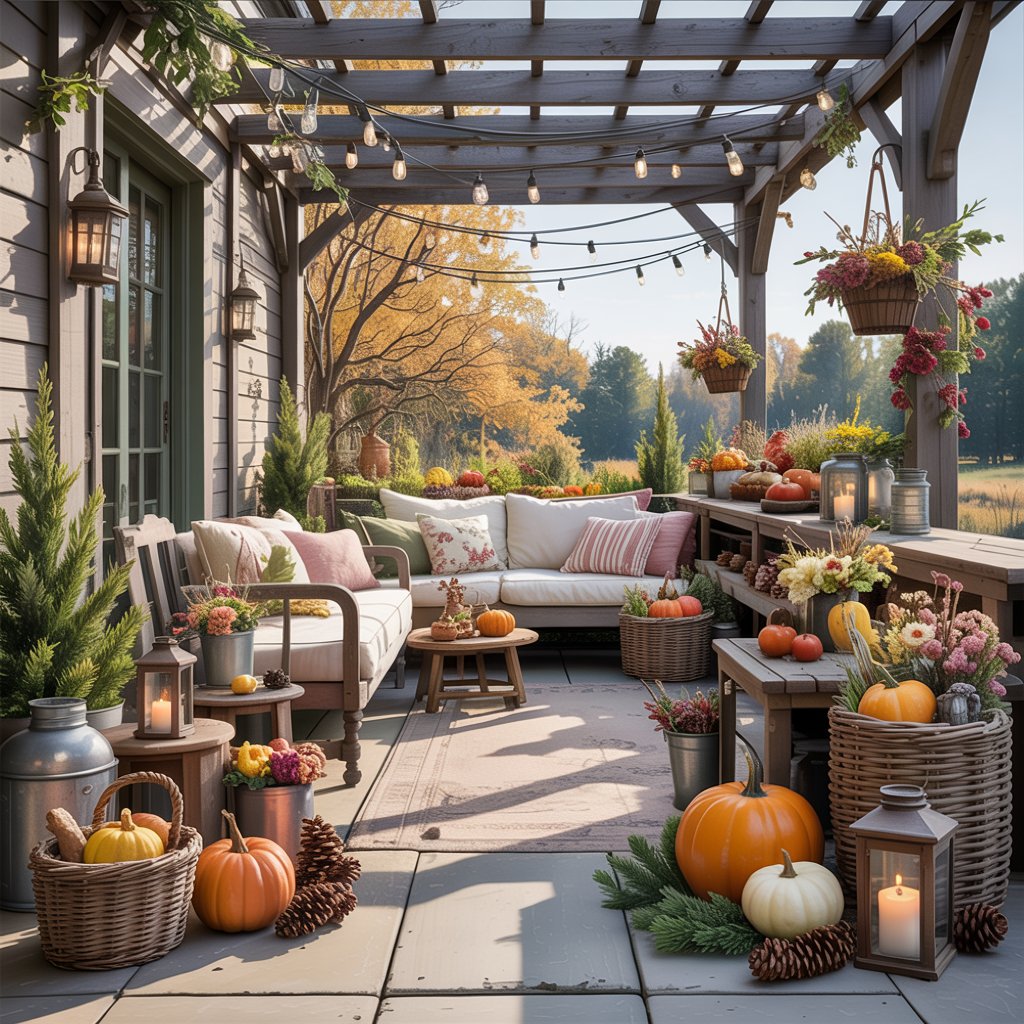
Pro Tip: Create a seasonal vignette on your mantel or entryway table that can be easily updated as the months change.
The Cottagecore Home: More Than Just a Style
Cottagecore represents a return to slower living and mindful appreciation of the small moments that make life beautiful. It’s not about perfectly curated spaces but about creating homes that feel lived-in, loved, and connected to nature and tradition. As you incorporate these cottagecore ideas into your home, remember that authenticity matters more than perfection.
Your cottagecore home should reflect your personal journey and connection to the natural world. As noted by Decorilla, the goal is to “infuse your home with whimsy and warmth.” Embrace the imperfections, celebrate the handmade, and create spaces that nurture your spirit and connect you to the timeless beauty of the countryside.
“Cottagecore isn’t about escaping reality—it’s about finding magic in the everyday moments of a simpler life,” concludes interior designer Jaymie Carroll from Real Estate Spice.
Final Pro Tip: Start small with one cottagecore element and build gradually. Your home should evolve naturally over time, just like a real countryside cottage that has been lovingly tended for generations. Remember that the most authentic cottagecore spaces tell personal stories through their collection of meaningful objects and natural materials.
